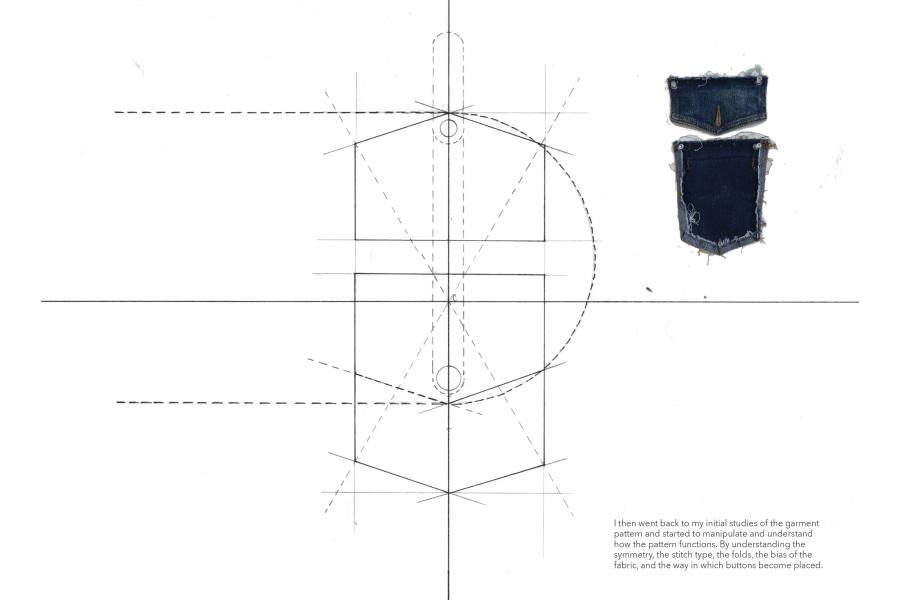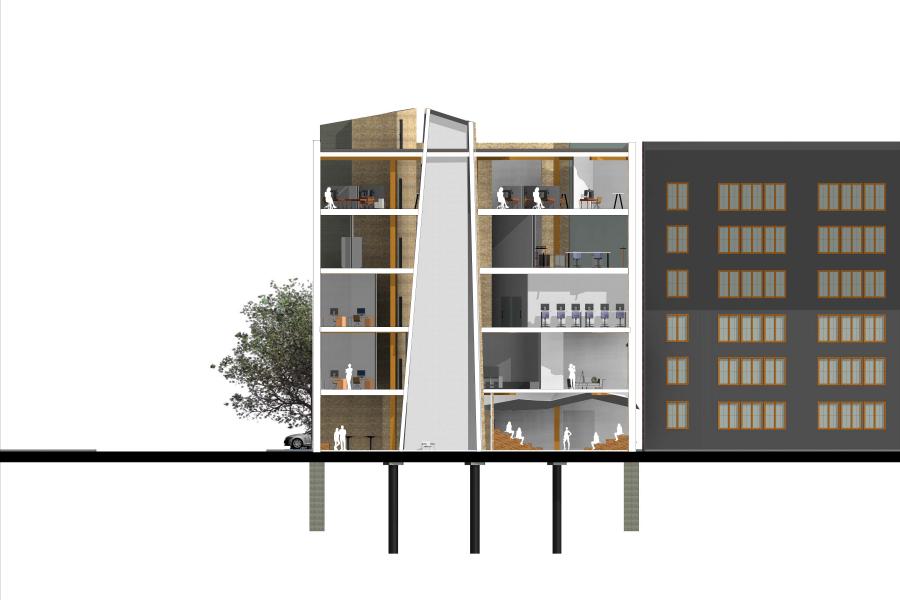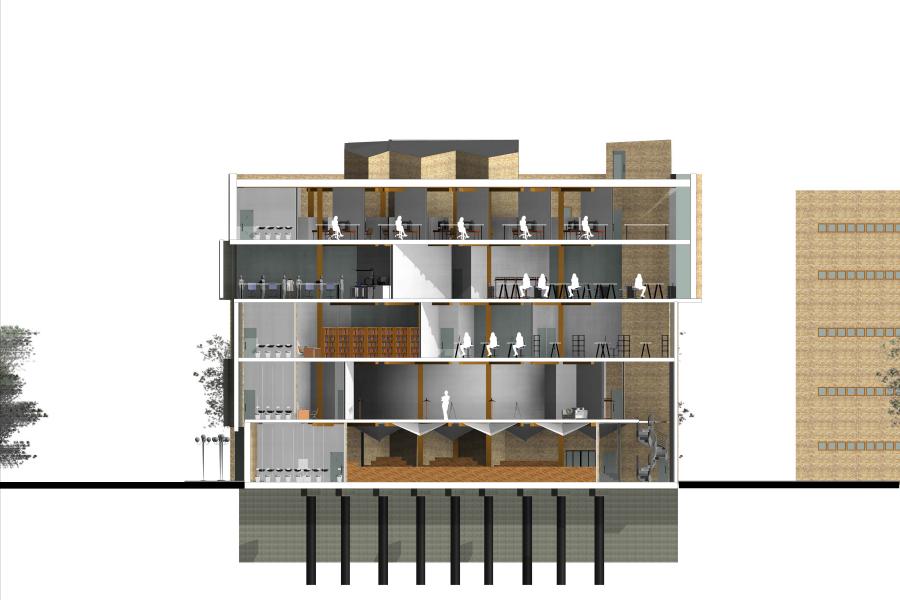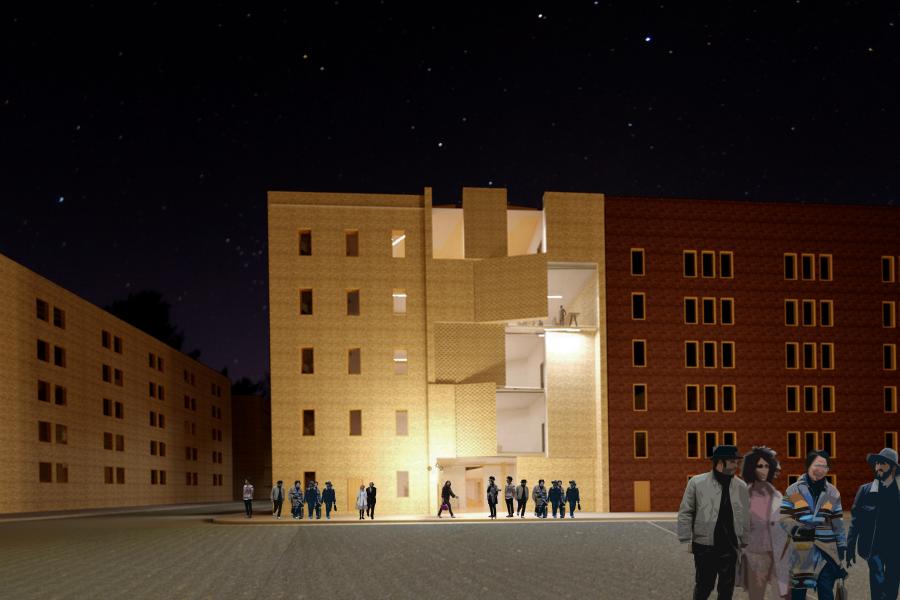Madison Barker
Advisor: Lancelot Coar







Pattern, Precision, Production:
An Architectural Typology for the Dressing of Buildings
Garments cannot exist independently without the body; the body dictates the geometry, the use, and the interaction with the surrounding environment. Buildings behave in a similar manner because the occupant, the geographical context, the wishes of the client, and various other factors dictate the typology. This thesis explores the technical processes that established the history of clothing manufacturing and identifies and explores the ways that design and construction within architecture have simultaneously followed similar trajectories. This thesis is both a study of the technical processes of both industries, as well as an exploration of new approaches towards ex-tending the techniques in the clothing industry, and to inform the methods and techniques in the architectural proposal.
Through the act of dressing or the fabrication of clothing, we are able to understand the nature of construction that has taken place as we analyze each seam, stitch, fastener, and the textile itself. Furthermore, the word machine implies a change in technology; with the addition of sewing machines, designed to further the progression of an intensified volume and craft of garment manufacturing, the post-industrialized world saw a shift in ideology. Therefore, how did the altering and precision of each garment change historically as the industry began to move away from a largely hand production based practice? In this project I will explore how the pre-industrialization process of garment making was transformative. Through this shift in technology and ideology began an erosion of individual couture skills.
The post-industrialized world left garment manufacturing in the hands of the machine, and by doing so has neglected the full range of value and purpose offered by hand fabrication of hand fabrication. Can an architecture be created that does not lose high-level craftsmanship with the complexity achieved using the aid of machines for design? Utilizing the technologies and strategies learned from the previous couture processes and adapting that learning of precision into a new building typology that will continue to pay great attention to detail. As technology continues to improve, it is evident that more individuals are losing interest with well-crafted clothing and architecture, and are moving more toward short-term satisfaction. “The US Environmental Protection Agency estimates that 85% of unwanted clothing—including those donated to charity—eventually end up in landfills.”1 Paradoxically, can architecture re-orient from this trend of impermanence and move towards a more long-lasting ideal tailored form? This design thesis stems from the notions of qualitative craft and will begin to project architectural processes that develop a program that focuses on key intentions of an educational facility with couture as the main foundation. Designing a facility where individuals will be able to learn and perfect a series of valuable skills to perfect their craft. To create an environment that is tailored to each skill and distinguishes the design as a place that is a precinct for understanding material properties, advanced technology, pattern making, quality design, and inherent creative freedom and is located in the heart of Winnipeg’s exchange district.
1Quito, Anne. “Eileen Fisher’s Beautiful Solution to Garment Waste.” Quartz. May 23, 2018. Accessed December 18, 2018. https://qz.com/quartzy/1283519/garment-waste-is-clogging-landfills-but-eileen-fisher-has-a-beautiful-fix/.
